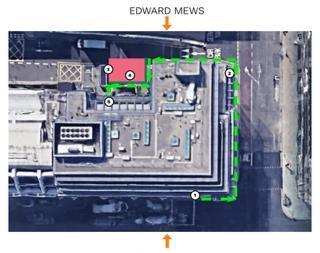One reason for their concern is that the assisted area status of much of the region may change soon. Another reason is that several of the local economies seem to be performing below their potential, given the existing industrial structure. This is troubling at a time when the growth rate of the national economy is slowing and export markets are under renewed pressure.
Assisted area status
Most of Anglesey and the Wirral have development area status. Gwynedd, Flintshire, Wrexham and much of north and west Cheshire have intermediate area status. The definition of these areas may change early this year, in readiness for the new European Union designations of regional aid that come into force in January 2000.
While Merseyside, including the Wirral, looks likely to retain its eligibility for maximum aid, other areas may well be downgraded.
Between 1986 and 1995, the north-west region, which accounts for 14% of the UK GDP, attracted 11.5% of the inward investment by value from overseas. The region feels that it has lost out to Scotland and Wales, both of which have attracted shares of this inward flow well above their share of national output. Regional aid expenditure in the north-west was £24m in 1995-96, compared with £117m in Scotland and £98m in Wales.
Within the region, the prime beneficiary of jobs created by inward investors has been Greater Manchester. Between 1986/7 and 1996/7, it accounted for 45% of the total compared with 29% for Cheshire and 17% for Merseyside.
Within Cheshire, the prime benefit has been experienced in the Warrington area in the north of the county. Chester has received only 4% of the projects, while the Wirral and Ellesmere Port have attracted less than 4% of the regional total, with a limited number of small investments by companies in the manufacturing industry.
In north Wales, projects have gone to the east rather than the west of the region. Inward investment in Wrexham and Flintshire has contributed strongly to the employment increase in north-east Wales of more than 15,000 jobs since1985. In these areas, there is a desire to retain this momentum, particularly in the manufacturing sector.
Recent projects have included an expansion by the Japanese lens manufacturer Hoya, in Wrexham, and an investment in car components manufacturing by Baumeister and Ostler.
Industrial performance
If the change in employment or output of a local economy over time is compared with changes in the national economy on a sector-by-sector basis, then it becomes possible to distinguish an ‘industry effect’ on the overall strength or weakness of the change, from a ‘local effect’. This is a relatively crude way of seeing whether a local economy is performing well or poorly, on the basis of how each local industry is doing against a national standard.
The results have to be interpreted with care. The local industry may not fit the output mix of the sector nationally. A slow growth in employment in an industry locally, compared with the national growth rate, may be due to a successful performance in raising labour productivity that causes output to grow more strongly than employment.
Given the caution, it is interesting to note that, while the negative growth in employment in the north-west between 1991 and 1995 was more than twice the rate of decline experienced nationally, more than two-thirds can be attributed to a local or regional effect, rather than the region’s industrial structure.
Attracting inward investors
Areas such as west Cheshire and north-west Wales look to inward investment to introduce a stronger representation locally of employment sectors that are growing strongly, nationally and internationally.
In both areas, the evidence of new firm formation and the growth of smaller enterprises shows relative weakness. So it is difficult to encourage local economic expansion to be home-grown, even with the many policy aids that are available in both areas.
At the same time, west Cheshire and north Wales suffer disadvantages in the competition for mobile investment, even with government regional aid. The skill base, for example, is poor. This is especially true among manual grades of worker.
In terms of infrastructure, the local provision has improved vastly compared with 20 years ago. Port and airport facilities are good in Liverpool and Manchester. However, the road links with the rest of the country are getting worse. They suffer from heavy congestion, although the north Birmingham relief road will greatly help access to London, the south-east and the Channel ports. And, along with the rest of the north-west region, the areas share the limitations of the west coast main rail line.
More tenuously, the external perception of the areas is not very positive compared with other locations an inward investor might consider. The town of Chester is the notable exception to this. It could be the marketing bridge to build on for the whole area.
Topics
Cheshire & North Wales - Regional Survey
- 1
- 2
- 3
- 4
- 5Currently reading
Labouring to create more job prospects
- 6
- 7
- 8





























